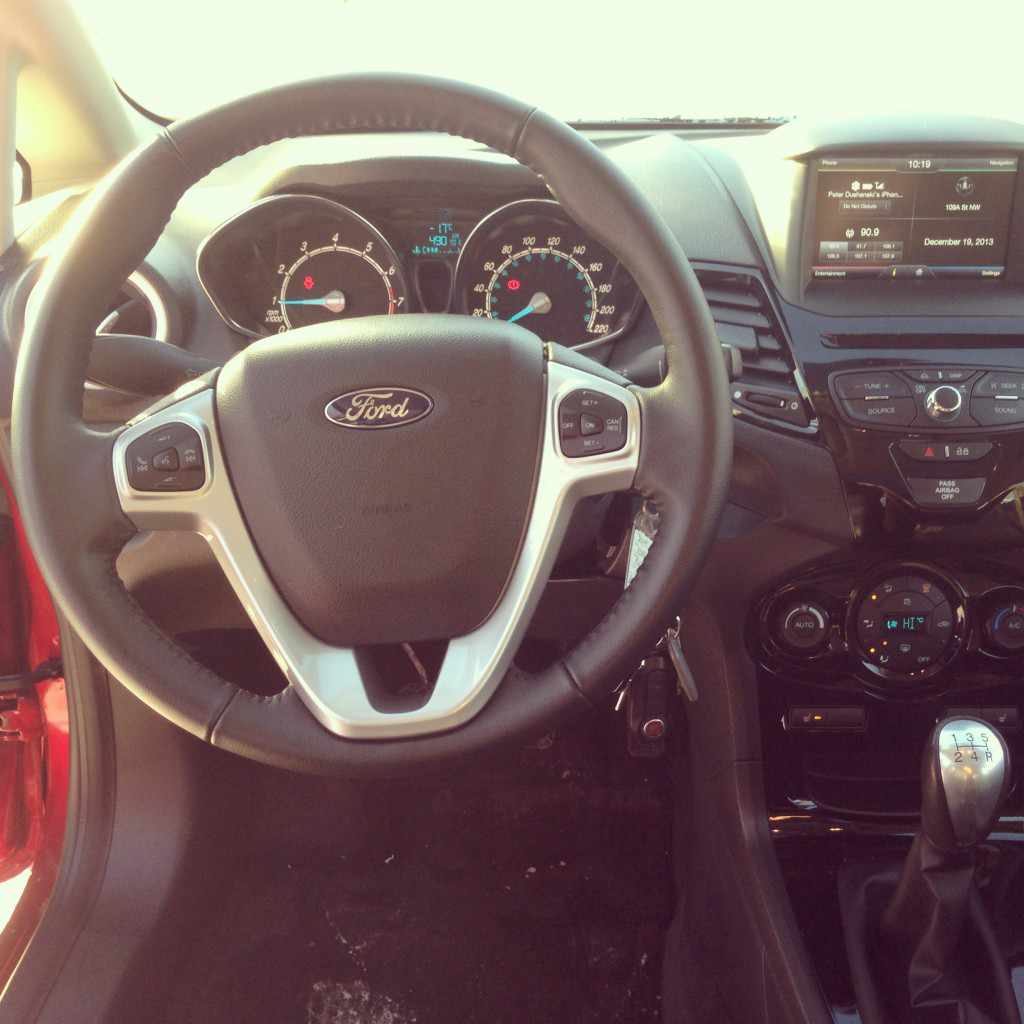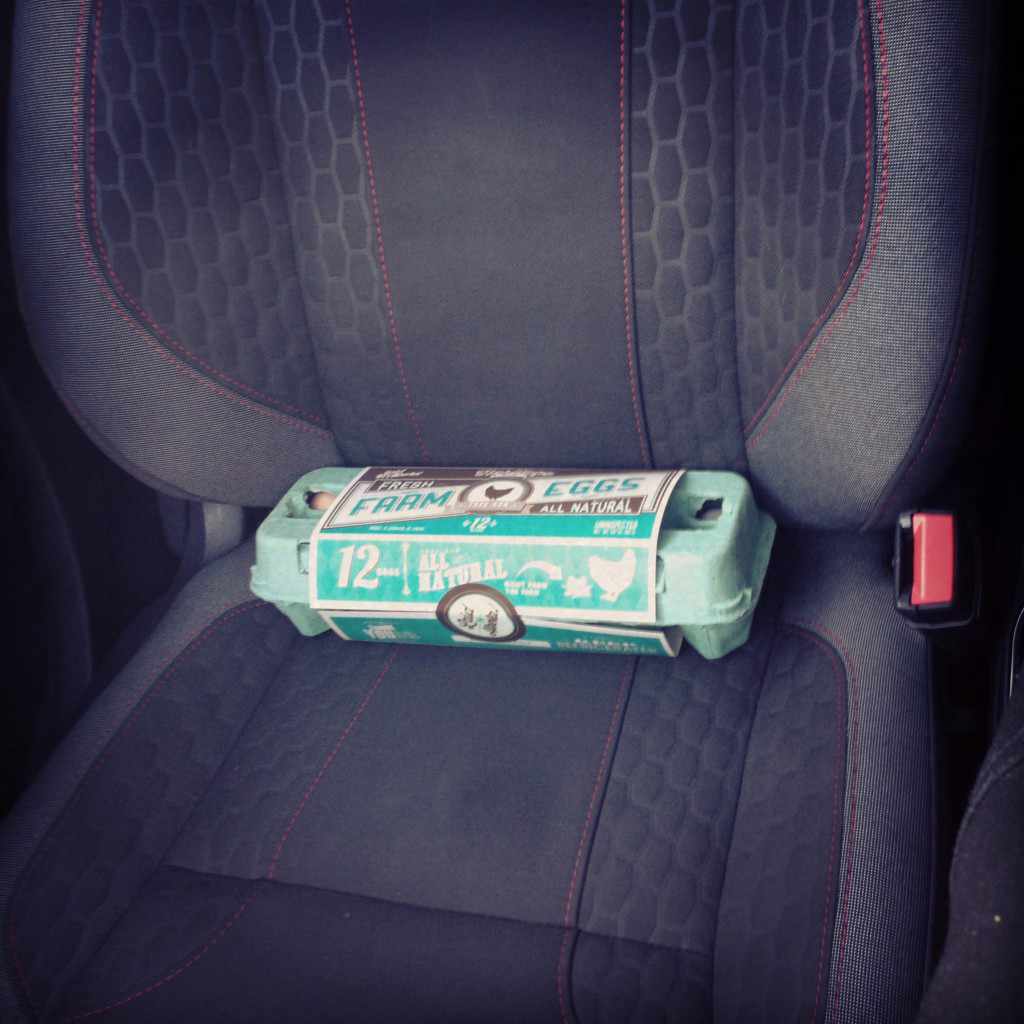by CarEnvy.ca
As I kid, I was a complete Legomaniac. I rushed home from school to play Lego, I bought Lego with every dollar I earned after a good report card, and I even won a few Lego competitions. When I was 7, I even had my Grandma knit me a Legomaniac sweater. I was obsessed, through and through. But in all my years of devotion, I never made a single Lego car, fortress, city, or airplane. Not one. All I did was sift through vast containers of miscellaneous pieces, find the ones that fit my vision, and assembled them together.
There’s a big difference between “making” and “assembling”.
To my mind, assembling is the process of arranging manufactured elements into new shapes, as with Lego blocks. Legomaniacs like me don’t “make” Lego space stations per se because we don’t manufacture the Lego blocks themselves; someone (or somerobot) does that for us. We just follow the included directions as best we can or work from our imaginations. The “making” (aka “manufacturing”) takes place long before we purchase the colourful bricks in a box.
So although Ford, Honda, and even Bentley call themselves “car manufacturers” and “automakers”, are they really anything of the sort? Are car companies really “making” cars any more than one “makes” a pizza pop for dinner?
On the surface, “car manufacturers” hire designers, labourers, and robots to work together in a factory. Parts and people enter in one end, and cars leave out the other. Once the cars roll off the line, billboards are rented, tweets are promoted, and Google AdWords are purchased to ensure that everyone hears about the new car. Without promotion, new cars would never make their way onto the front pages of blogs and magazines, and into our hearts and minds. As someone who spent some time on the sales side, I can assure you that the industry is far more interested in the sizzle than the steak.
That’s because, when it really comes down to it, Car Companies aren’t in the business of “making” or “manufacturing”, they’re in the business of turning a profit, which they largely do by branding, marketing, and stuffing supplying dealer channels. Several car companies even contract out the primary design of their vehicles. Think Bertone, Pininfarina, and Castriota.
Still, we can’t seem to shake the idea that Car Companies own the means of production, despite all evidence to the contrary. A birds-eye view demonstrates the Car Companies are assemblers than makers, who subcontract out to a network of primary, secondary, and tertiary suppliers located all over the world. So why do we still say that a car is made in one country when 95% of its components might be made elsewhere? Even more broadly, in an age where the Toyota Camry has more Made In America parts than any other car, why does it matter where a car is or isn’t made?
 This brings us to the 2014 Ford Fiesta. Screwed together in Mexico, 4,800km (2,983mi) away, and with a Brazilian engine built 11,000km (6,835mi) away from CarEnvy’s home base in Edmonton, the Fiesta is a sterling example of the One Ford strategy: the Blue Oval’s mission to achieve “economies of scale” and “efficiencies”, and a mission that’s now the norm in the global car industry. Soon, even your new Audi will be “made”, or shall we say, “assembled” in Mexico. But does that matter?
This brings us to the 2014 Ford Fiesta. Screwed together in Mexico, 4,800km (2,983mi) away, and with a Brazilian engine built 11,000km (6,835mi) away from CarEnvy’s home base in Edmonton, the Fiesta is a sterling example of the One Ford strategy: the Blue Oval’s mission to achieve “economies of scale” and “efficiencies”, and a mission that’s now the norm in the global car industry. Soon, even your new Audi will be “made”, or shall we say, “assembled” in Mexico. But does that matter?
Certain purveyors of cool are starting to say “Yes, it matters very much”. As much as we love to hate Vancouver’s yuppies, they’re always a few steps ahead of the rest of us, leading the adoption curve with pinch of panache and, yes, a smidgen of smugness. Not long ago, it would’ve been in vogue for said yuppies to import their preferred goods from faraway lands, demonstrating to onlookers their worldliness and sophistication. Mediterranean marble kitchen countertops? Absolutely!
But times have changed. Now, shipping thousands of pounds of bragging rights across the globe is a sign that you’re out of touch with the times. Even if you can afford the cost, who on earth can afford the environmental impact?
So what is cool? Local. Local is super f*cking cool.
Your 89-year-old neighbour knitted you that scarf? Bad ass! These vegetables were grown in your own garden? Right on! This countertop is made of reclaimed wood from an abandoned grain elevator in rural Alberta? So sick!
And as is so often the case, the yuppies might be on to something. Making things locally makes a lot of sense, even if it appears, and I do mean appears, to increase the cost.
Firstly, local businesses require less dependence on global supply chains, which are overly susceptible to global instability, be it political or environmental. If you’re a global car company making cars who uses steering wheels manufactured in Somalia, you might have some production delays right now – not unlike Intel, who experienced supply shortages during the recent floods in the Philippines. Global instability is not only inevitable, it makes a mess of the global production model. Strong local economies are more robust to external shocks simply as a result of their geography. Plus, in times of need, people who live closer to each other are more likely and more able to help one another out, easing the pain of natural and man-made disasters.
Secondly, local businesses are integral members of their communities, providing jobs that won’t flee when the government raises taxes by 1% (or if Google is anything to go by, charges taxes of 1%). So not all of the higher up-front cost of locally-made goods disappears into the off-shore ether, it gets reinjected over and over again into the local economy.
Thirdly, when something goes wrong with your new toy, your local business is accountable. The local businesses, being so integrated into the community, has a reputation to uphold that transcends material cost. As members of the community, they have skin in the game, so they care deeply about their customers’ satisfaction. For an example of a global business that doesn’t give a shit, look no further than Porsche and their exploding water-cooled engines.
Lastly, the owners of local businesses also live where they work, providing a built-in incentive for them to give back to their communities in ways other than taxes. Global businesses are just that: businesses. They only give back to the extent that it buys brand recognition and positive PR and they definitely don’t give back in terms of taxes. Global businesses have no social connection to any community, they’re just looking for profit as part of their fiduciary responsibility (responsibility to shareholders to make more money). As such, just as we’ve seen with US auto manufacturing, when there’s more money to be made by assembling cars elsewhere, it’s elsewhere that cars get assembled, leaving once prosperous communities decimated by their excessive dependence on a single global company.
Just as the US was a hotbed of car assembly 50 years ago, now Mexico is taking centre stage. And history tells us that events will unfold for Mexico exactly the same way as they did for our American friends. In all likelihood, in 50 years time, the new nexuses of car assembly for the Americas will be Guatemala, Honduras, or somewhere else in the Americas that’s similarly cheap.
This isn’t to single out Ford – far from it. My 2012 Fiat 500 was assembled in Toluca, Mexico, equidistant to Edmonton from the Fiesta’s Cuautitlán Izcalli assembly plant. My commentary-as-conversational-catalyst is broader than any one manufacturer and applies to the consumer industry as a whole, particularly as our cars become increasingly undifferentiated from the disposable electronics we upgrade every 2 years.
We need to start asking ourselves whether this type of global manufacturing makes any sense at all, other than saving us a few bucks up front and mostly just enriching the already enriched. Global manufacturing centralizes production and pits government against government in a Race To The Bottom to offer tax rebates, wage leniency, and reduce environmental oversight as they compete for multi-billion dollar contracts. Ultimately, this leads to poorer working conditions, greater environmental depletion, and long-term costs that aren’t reflected in the price of the product. This is the essence of globalization: we produce goods that are cheaper now, and cost us more in the long run. We get more bang for our buck, but we erode our community ties.
The local movement is ultimately a reaction to globalization. The more unbreathable Shanghai’s air becomes, the more manufacturing delays that are caused by environmental events, the more people will wake up to the fragility and senselessness of global manufacturing. In the not-so-distant-future, anything that can be local, will be local. And even for complex consumer goods like cars and cell phones, successful projects like FairPhone show us that consumers are starting to demand greater transparency from manufacturers. Ultimately, that’s what buying local is about: transparency. When we buy a product from someone who made it with their own two hands, we can look them in the eye and determine, at that moment, whether we’re being sold a bill of goods or a quality product made with genuine love. We can’t do that with products made by global businesses.
On a frosty winter solstice, I slid the Ruby Red Fiesta out of our underground parkade into the sharp Alberta air. I was on my way to pick up some eggs. But these weren’t just any eggs, these were heritage chicken eggs from the University of Alberta’s Poultry Research Centre as part of their program to maintain old and unmodified breeds of chickens. Our hen, named Shankuntala after a Google Doodle I saw the day I named her, had laid another dozen tasty eggs for my Mrs. CarEnvy and I. When I arrived at the research centre, I met the young man who tended to Shakuntala. He smiled at me and I smiled back as we shook hands. He carefully wrapped and labeled our bi-weekly dozen, just as I knew he would for his own family. He handed over the eggs and I cradled them as if they were a personal gift from him to me. I said “Thank you, see you in two weeks!”, and was off with a wave. I walked back to the Fiesta and placed them in the passenger seat, wondering if I should turn on the seat heater or not, as I would for any other guest in my car. As I left the parking lot, I streamed soothing classical music from my iPhone to SYNC, making sure that Shakuntala’s eggs were as relaxed as could be.
With a little bit of effort, we can buy local food, but local consumer goods aren’t so easily acquired. Until they are, it’s time for us to demand transparency from the global businesses that we bring into our homes. All car manufacturers, Ford included, need to improve their transparency – to show us that they’re conscious of their impact on environmental and human health. They need to do their due diligence to eliminate red list chemicals, reduce energy waste, and design vehicles that easily disassemble into reusable technical materials. It’s hard, but it’s possible. And it’s worth it.
We can no longer afford globalization and it’s externalized costs. If we’re going to buy, let’s buy things that are unique to our time and place – things that speak to our culture and our land. And if we’re going to travel, let’s buy carbon credits, especially ones that are approved by people like David Suzuki and accredited by organizations like The Gold Standard. And if we’re going to buy from global businesses, let’s buy from ones with Cradle to Cradle Certified products.
Let’s reprogram making. Let’s improve our world.



